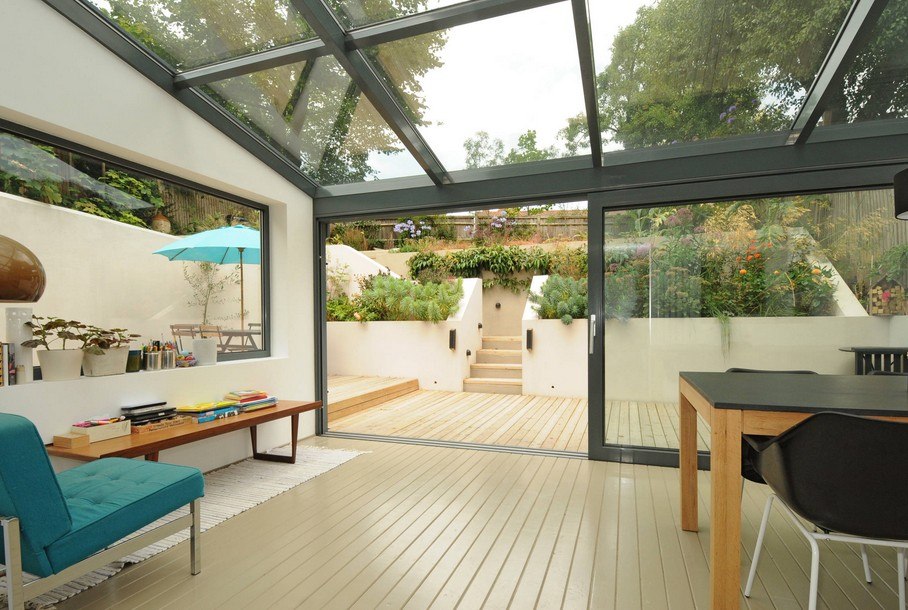#2191. Modern glass extension with panoramic glazing: perfect integration of house and garden

This image showcases an excellent example of modern architectural integration between interior and exterior spaces. We are looking at an elegant interior of a conservatory or extension with panoramic glass walls and ceiling, creating an effect of complete unity with nature. The light wooden flooring visually expands the space and continues onto the open terrace, blurring the boundary between the room and the garden.
The glass roof with black metal structural elements deserves special attention as it allows natural light to fill the room throughout the day. This solution not only makes the space airy but also helps reduce lighting costs. The sliding glass doors act as a "transparent wall," providing an unobstructed view of the multi-level landscape design of the garden.
The interior is minimalist yet thoughtfully detailed. The turquoise sofa creates a focal point and adds brightness to the neutral color palette. The wooden table with a metal base and bookshelf with a collection of books lend the space an intellectual charm. The black dining table harmoniously combines with the metal elements of the roof structure, creating a cohesive design.
The multi-level garden with white retaining walls creates an interesting perspective and transforms the view from the window into a living picture. The turquoise umbrella on the terrace echoes the color of the sofa, creating a well-thought-out color composition. This approach to country house facade design and its integration with the landscape is an excellent example of how modern architecture can create spaces that blur the line between home and nature.
When designing your own home, you can use similar techniques: panoramic glazing, continuation of interior finishing materials into the external space, minimalist furniture, targeted color accents, and multi-level landscape design. These solutions will help create a harmonious space filled with light and visually expanded through connection with the surrounding nature.